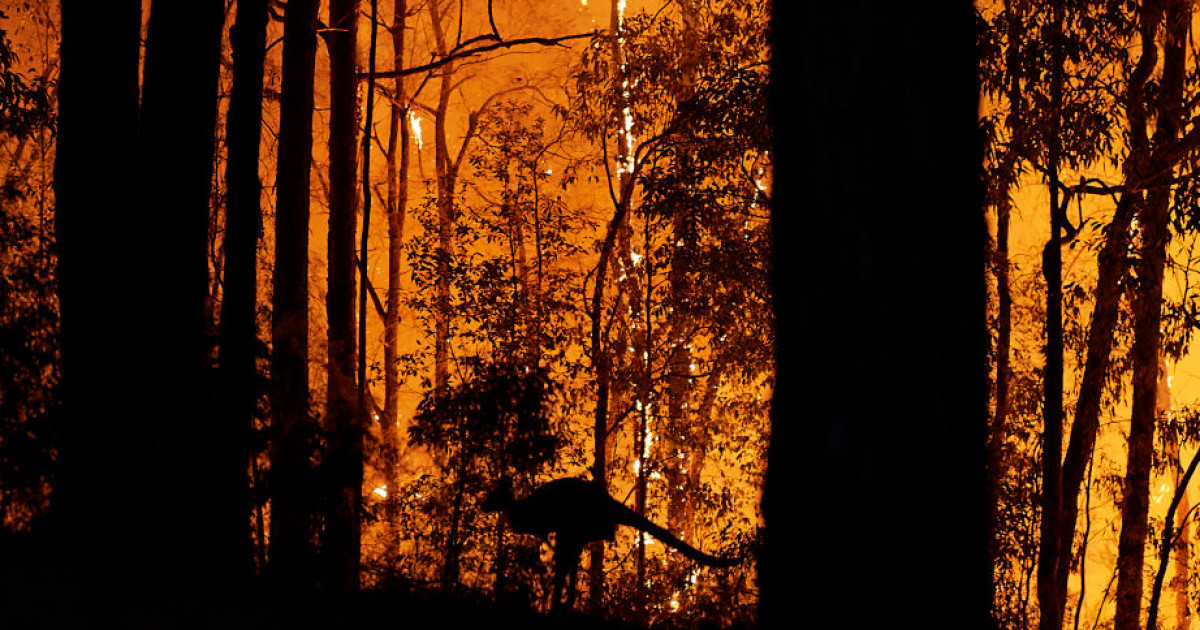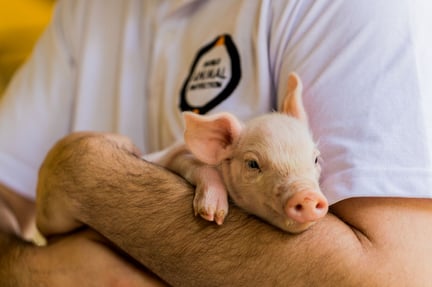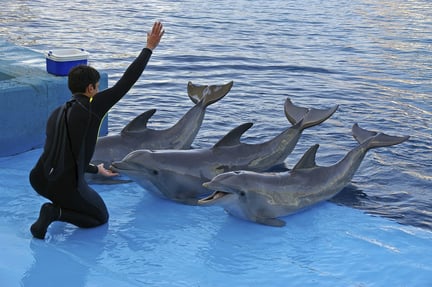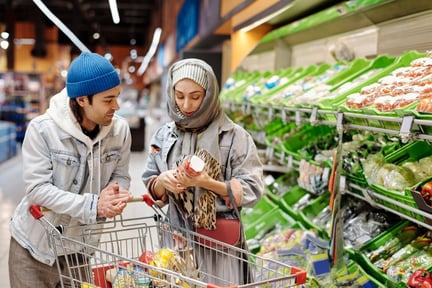We all play an important role in keeping the planet healthy and we all feel the impact when that interconnection is ignored.
The climate crisis is the clearest example of how our impact as humans, consumers and voters can be felt on the natural world. For example, factory farming is a notorious contributor to greenhouse gas emissions. Sadly, that’s not the only example.
Right now, we’re living through a pandemic, ultimately caused by a virus jumping from wild animals to people.
What we do in our everyday lives, through the choices we make has an impact. How well this interdependence thrives relies on all of us doing our part. Please join us - let’s work together to change the world, by changing the lives of animals.
Learn more about One Health, One Welfare
Developed by the Food and Agriculture Organization of the United Nations (FAO), the World Organization for Animal Health (OIE), the United Nations Environment Program (UNEP) and the World Health Organization (WHO), the idea of One Health, One Welfare takes an integrated approach to balance the health of people, animals and ecosystems. Influential groups, governments, companies and policy-makers are starting to recognize that the health of humans, domestic and wild animals, plants, and the wider environment are closely linked and inter-dependent.
A One Health, One Welfare perspective acknowledges this deep interconnectedness and reminds us that we cannot and should not try to solve the world’s biggest challenges in isolation.
As an organization with a goal to transform the lives of animals, we must understand, collaborate with and complement progressive movements for health and human development, environmental protection, global equity and access, the rights of Indigenous peoples, sustainable economic development and many other sectors. We can only prevent the next pandemic, create an equitable, humane and sustainable food system and address climate change, if we work together.
Learn more about how the health of animals is connected to the health of people and our planet
Animal welfare and the health of people:
Antibiotic resistance – most animals on factory farms are routinely fed antibiotics to keep them from getting sick as a result of their low welfare conditions. Around 75% of the world’s antibiotics are used in farming and the overuse of antibiotics is causing a global health crisis of drug resistant superbugs.
Pandemics – Almost all known pandemics have been zoonotic diseases (diseases that jump from an animal to a human) but the emerging of a pandemic is entirely driven by human activities. Widely recognized drivers of pandemics include:
- Intensive animal agriculture where animals are crowded and stressed increases the likelihood of disease. Bird flu and the swine flu epidemic are examples of zoonoses stemming from farm animals.
- The global wildlife trade where a variety of species are kept in stressful and filthy conditions, creating the perfect environment for viruses to jump from animals to people. SARS, Ebola and COVID-19 are zoonotic diseases linked to wildlife.
Foodborne illness – The Government of Canada estimates that there are about 4 million cases of foodborne illness (e.g., E coli and Salmonella) in Canada every year, costing our healthcare systems billions of dollars. The crowded and unsanitary conditions that many farm animals are raised in cannot be ignored in our quest for food safety. Read our What’s On Your Plate? report for more.
Inequality – Although zoonotic pandemics (driven by human exploitation of animals) can emerge in any region across the globe, they have unequal impacts on different countries and are often more severe on women, people living in poverty and Indigenous communities. Read more: IPBES Workshop Report on Biodiversity and Pandemics.
Animal welfare and the health of the planet:
Deforestation – Clear cutting forests and wild spaces for feed production to support massive factory farms happens around the world but nowhere is it more apparent than Brazil. The Amazon, a major producer of the world’s oxygen, is also home to millions of species of animals that suffer habitat is loss. An area the size of three football pitches is lost every single minute to agricultural uses.
Biodiversity loss – The removal of species from their natural habitats causes ecosystems to degrade and even collapse. Human activities are the main driver of biodiversity loss. Factory farming contributes to climate change, pollution and habitat destruction. The global wildlife trade leads to poaching and the introduction of invasive species when unwanted exotic pets are abandoned. Read more: IPBES Workshop Report on Biodiversity and Pandemics.
Greenhouse gas emissions – Fossil fuels are used to produce fertilizers for factory-farmed animal feed. And when applied to fields, these fertilizers release harmful nitrous oxide greenhouse gasses into the atmosphere. Overall, greenhouse gasses from factory farm animal feed production and processing represent 45% of total agricultural emissions. Read more from the FAO: Major cuts of greenhouse gas emissions from livestock within reach - Key facts and findings.
Make a disaster plan for your pet
As natural disasters become more powerful and more frequent, Canadians need to be prepared. Whether it is a flood, fire or earthquake, if you complete this checklist beforehand, you can save your pets life.
Disasters can occur at any time and may disrupt basic services such as water, electricity, phone and gas. Without an emergency plan, you could make panicked decisions that threaten the safety of your pet, yourself and your family.
By making an emergency plan for your family pet, you will be prepared to evacuate fast or stay put with enough supplies during an emergency.
Download our checklist
Leaving pets out of evacuation plans can put them in danger. Pets that are left behind during an emergency are likely to be injured, lost, or worse.
Get your copy of our checklist:
Download now (PDF)
Take action to prevent the next pandemic
Every day, thousands of wild animals are poached or farmed and sold into the global multi-billion-dollar wild animal trade – for food, for pets, for traditional medicine and for entertainment. The horrific conditions they face cause much suffering for every single animal involved.
Close contact between captive wild animals and people is a dangerous cocktail. Zoonotic infections can emerge and be spread at every stage of the trade. This should be of critical concern, as almost 75% of emerging infectious diseases affecting human health originate in wildlife – SARS, Ebola, and now COVID-19.
Beyond the pain inflicted on animals, we must stop this trade in wild animals now to help prevent future global health crises and protect our environment for generations to come.
Join us in calling on the Government of Canada to:
- Support the immediate and permanent closure of wildlife markets.
- End the import and domestic trade in wild animals and wild animal products that could contribute to the spread of zoonotic disease in Canada.
- Champion this issue globally and encourage other countries to end the international trade in wild animals and wild animal products. We are calling for a global ban on the wildlife trade.
Join us in seizing this moment to build a better world for all of us, animals and people. Add your name to the petition!
Act now
Sign up to move the world with us
Join us as we work to transform the lives of animals. By joining our community you’ll receive updates and resources that will help you make informed decisions when animals are involved. Sign up today!



